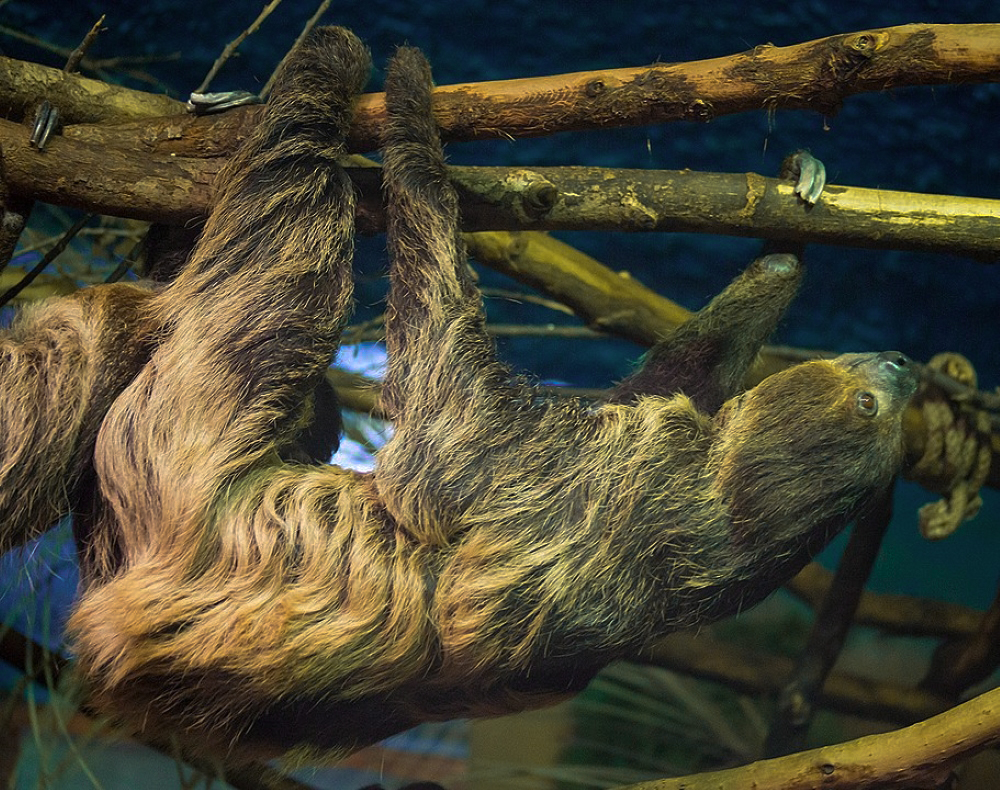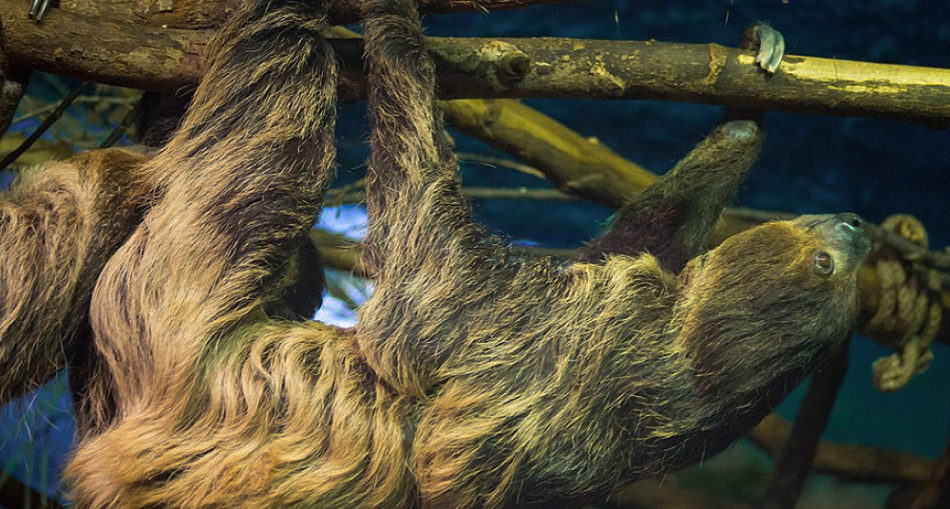Sloths are among the slowest mammals and even the laziest animals on earth. The Two-Toed Sloth, in particular, spends most of their lives hanging from trees, even during feeding, mating and birthing. There are no other reasons for doing this, except that actually standing on the limbs requires too much energy.
There are two species of two-toed sloth; the Linnaeus’s two-toed sloth (Choloepus didactylus) and the Hoffman’s two-toed sloth (Choloepus hoffmanni) which shares similar characteristics and behaviour. They share a common ancestor, a species of sloths that lived on the ground many years ago. However, they have evolved to the tree-loving mammals we know them as today.
The Two-Toed Sloth (Choloepus didactylus) is also known as the southern two-toed sloth, unau, or Linne’s two-toed sloth. The Choloepus didactylus, native to Guyana, Venezuela, Brazil, Peru, Ecuador, Columbia and other parts of South America. They are known for spending most of their days sleeping and lounging about. They are not easily recognizable; you may easily mistake them for a nest or part of a tree since their fur is used in camouflaging. Find out twelve (12) more interesting fun facts about this species by reading on.

A Two-Toed Sloth – Photo By Rigelus – Own work, CC BY-SA 4.0, https://commons.wikimedia.org/w/index.php?curid=59935869
Features Of The Two-Toed Sloth
- Limbs and Claws –Their four limbs are equal in length snd ends in two (2) curved claws, as their name The ‘Two-Toed Sloth’ suggested.
- Body – Their sizes range from twenty-one (21) to twenty-nine (29) inches.
- Vertebrate – The Two-Toed Sloth has a short neck of about six to seven (6-7) vertebrae.
- Colour – Starting from their stomachs to the back, the Two-Toed Sloths are covered in long, brownish-grey hair.
- Fur – Each strand of their fur has grooves in which algae are accumulated, thus giving the sloth green tint and the ability to camouflage from predators.
- Head – These sloths have a relatively short and flat head, with a snub nose, big eyes and basic.
- Teeth – They have small molars which are always growing since they are ground down during eating.
- Mouth –Since they have simple, dull teeth, the hardened lips of the Two-Toed Sloths are used to cut and crop leaves.
Scientific Classification Of The
- Kingdom: Animalia
- Phylum: Chordata
- Class: Mammalia
- Order: Pilosa
- Family: Choloepodidae
- Genus: Choloepus
- Species: C. didactylus
Habitat Of The Two-Toed Sloth
The Two-Toed Sloth resides solely in trees, in the canopy of tropical rainforests. They have a range of about ten (10) acres and are mostly solidarity. However, more than one female may occupy the same tree and the young may live in the same area or range as their parents.
Diet Of The Two-Toed Sloth
The diet of the Two-Toed Sloth is primarily made of leaves, small twigs, berries, fruits and other vegetation. However, they may also eat insects and smaller preys. They hydrate by lapping dew from vegetation.
Reproduction Of The Two-Toed Sloth
The female Two-Toed Sloths mature at about three (3) years of age while their male counterparts mature later at four to five (4-5) years of age. The females birth one offering annually with their gestation period lasting approximately six (6) months. At birth, baby sloths weight around twelve (12) ounces and have a length of ten (10) inches. Babies attach or cling to their mother bellies until they can move on their own, usually in five (5) weeks.
12 Facts About The Two-Toed Sloth
- The Two-Toed Sloths practically never leaves their tree unless they are switching or changing food source or need to defecate.
- They are exceptionally slow travellers on the ground but in trees, they can move around one hundred and twenty-five (125) feet in trees.
- Their streamlined body and fur, evolved for tropical weather make them good swimmers.
- They sleep, eat, mate and even give birth while hanging upside down from branches.
- Their digestive tracts are short yet retain food for about one (1) month.
- These primarily nocturnal creatures sleep for fifteen (15) hours during the day and become active at night.
- To eat, they use one foot to grab vegetation and pull it to their mouths.
- At rest, the Two-Toed Sloths are typically curled into a ball. Their algae-covered fur allows them to resemble a tree branch, a knot in the wood or even a termite’s nest.
- While they are mostly meek, they will use their teeth and claws in self-defence.
- If distressed the Two-Toed Sloths will moan or hiss.
- Sloths are a prized food source and are often hunted as a result.
- The Two-Toed Sloth live for about twenty (20) years in the wild but relatively aged ones have been recorded in captivity of thirty to forty (30-40) years
The Two-Toed Sloth in Guyana
In Guyana, the Two-Toed Sloth is less common than the Three-Toed Sloths. They are easily distinguished by the number of claws on their limbs; they have only two. You can find the many species of sloths at the Sloth Island Resort, named after its native, docile inhabitants. The Two-Toed Sloth has the unique ability to collect algae via their fur to disguise themselves, so they may be hard to spot!
Article References
- https://animaldiversity.org/accounts/Choloepus_didactylus/
- https://ielc.libguides.com/sdzg/factsheets/twotoedsloths
- https://en.wikipedia.org/wiki/Linnaeus%27s_two-toed_sloth
- https://animals.mom.com/twotoed-sloths-live-10151.html
- https://www.wired.com/2012/01/the-sloths-evolutionary-secret/
- https://www.worldanimalprotection.us/news/10-facts-about-sloths-natures-slowest-animals#:~:text=The%20impressive%20biology%20of%20a,its%20life%20hanging%20upside%20down.







